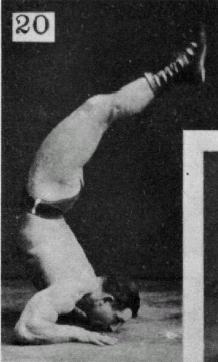Today’s post will answer another question from the many I regularly receive.
“Hey I am Stefan I am now starting out with doing the handstand, but my question is what muscles are involved in doing the handstand and what exercises can I do to improve it?”
Let’s start with the first question, what muscles are involved in the handstand? And the answer is all of them.
When you’re starting out you need to be able to keep your body tight if you want to have any chance of staying upside down. This means every muscle must be engaged from the tips of your fingertips down to your toes.
This doesn’t mean you flex everything as hard as possible but you must stay tight. As you advance you’ll learn how to use only as much tension as is needed and no more. This allows you to go for longer periods. But to start out with squeeze all those muscles, arms, back, abs, legs and even the toes.
Now onto the second question. There is a rule of thumb in training. In order to get good at something you must do that thing. So if you want to get good at handstands you must do a lot of handstands. There is no way around this.
This is true but in some cases you’re better off working on easier skills. Do skills that are easier then the handstand itself that build up the same abilities that the handstand needs. For the handstand these include a wall handstand, frogstand, forearm stand, and headstand. All the details and proper progression for this is laid out in the Secrets of the Handstand Quickstart DVD.
Work on easier skills that lead up to the harder ones. For anything else in hand balancing check out the Hand Balancing Mastery Course.
As an analogy, if you wanted to learn the piano you wouldn’t start out with the Rach 3 but instead focus on scales and simple songs first. This concept holds true for all skills you desire to build.
Good Luck and Good Hand Balancing,
Logan Christopher









